
8 minute read
May is AAPI month - it’s time for some awareness
from The Eyrie: May 2021
by The Eyrie
TOP LEFT The Olathe South Girls JV team played against Shawnee Mission Northwest on April 8. Abigail Pierce, junior, does a flip throw to get the ball to her teammates down the field. PHOTO BY Anna Palacio
TOP RIGHT Eric Butler, sophomore, competes in long jump during the track meet against Olathe East on April 9 at the Olathe District Activity Center. PHOTO BY James Neely
Advertisement
RIGHT Kaylie Guinn, freshman, steals the ball while playing against Shawnee Mission Northwest during the JV game on April 8 at Shawnee Mission Soccer Complex. The Falcons tied 2-2. PHOTO BY Alek Mackey
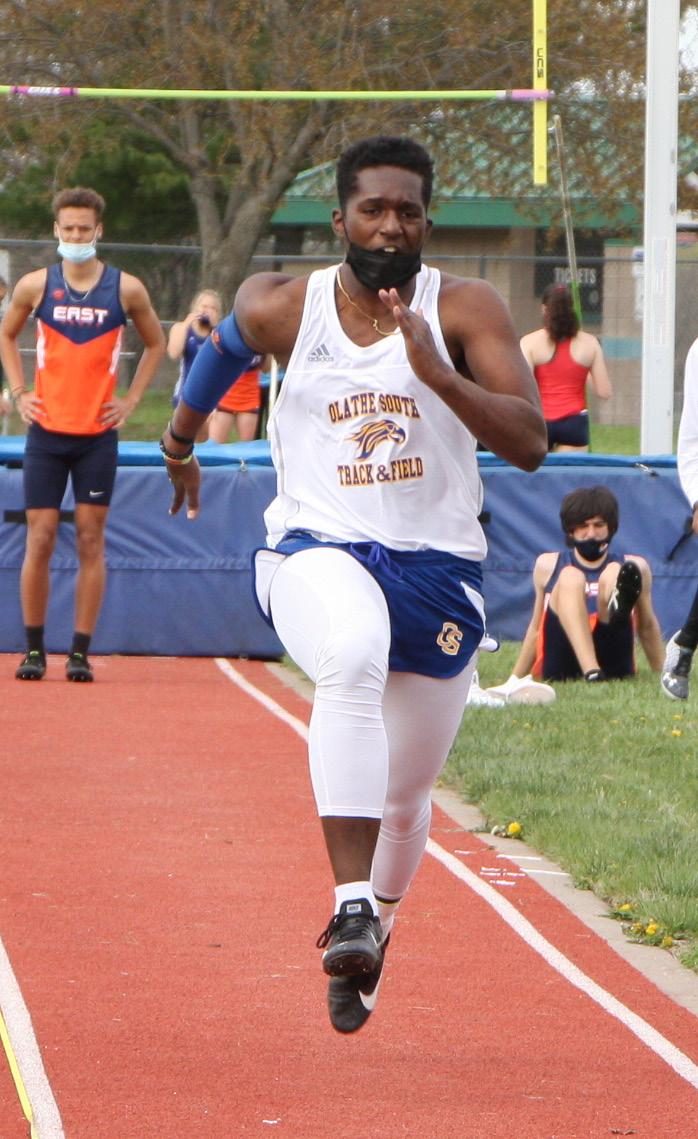
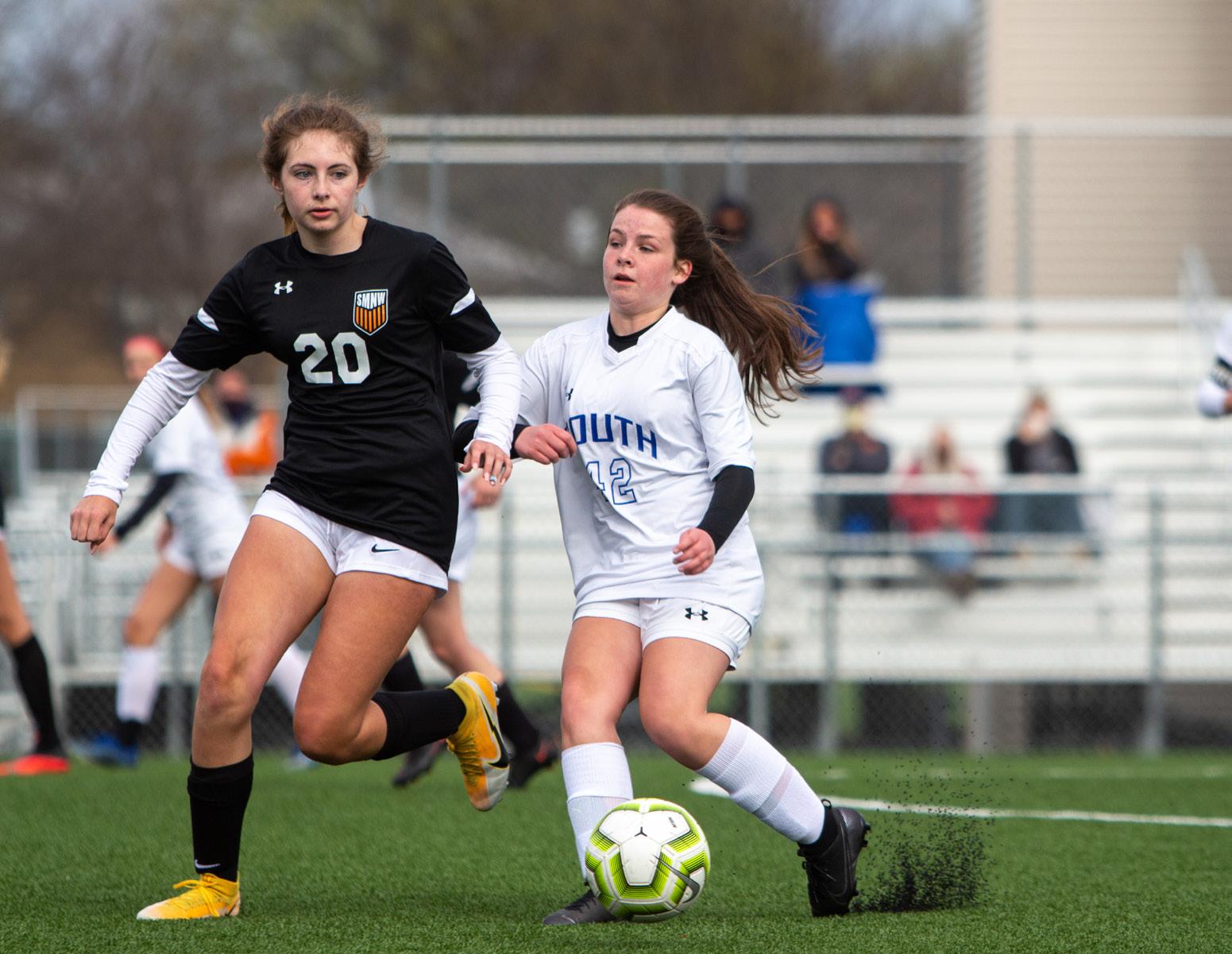

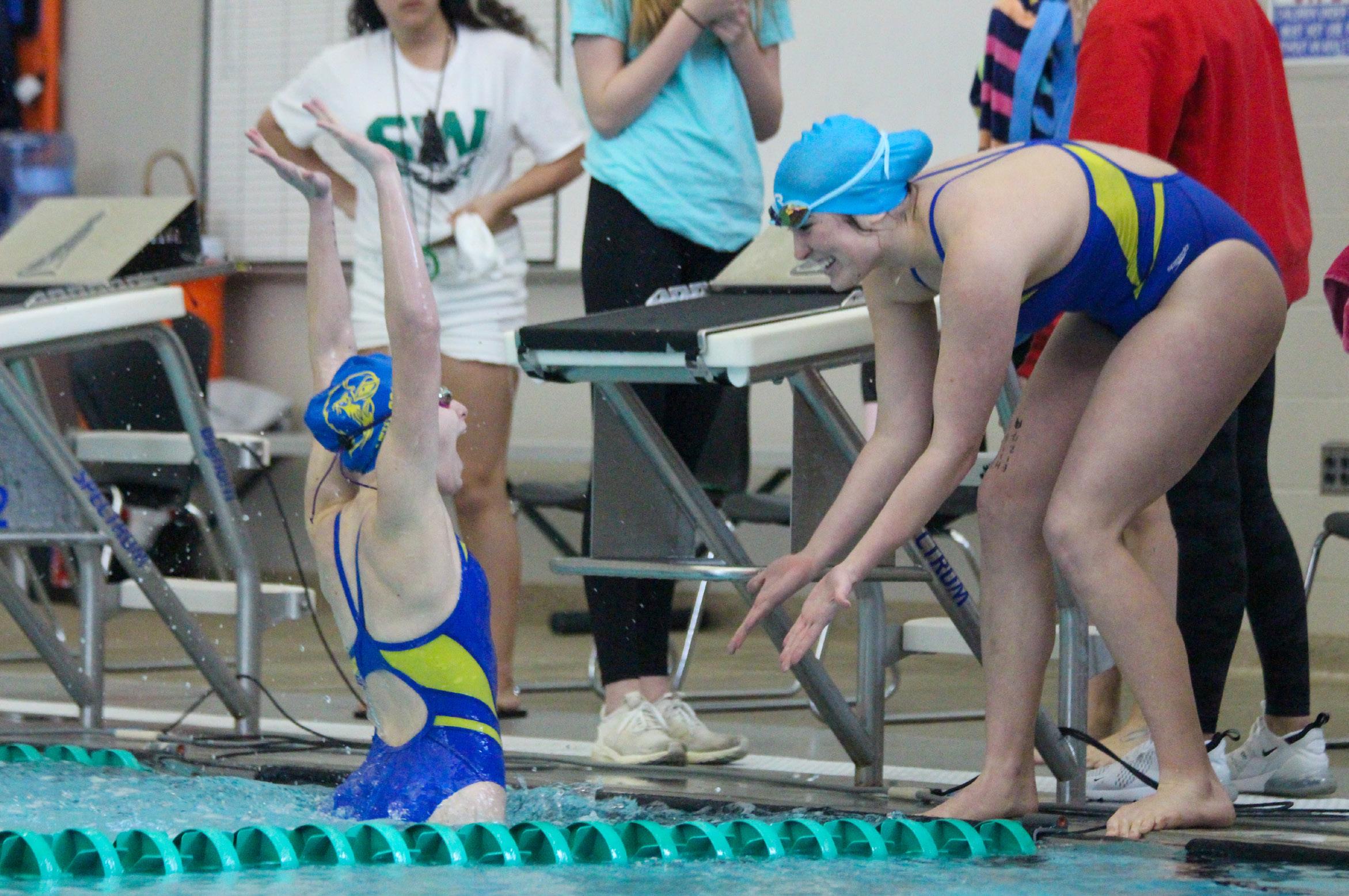
ABOVE Juniors Brenley Reno and Olivia Swaney celebrate finishing first in a relay against Blue Valley Southwest on April 22. “We made a really good time in the 200 [freestyle] so we got excited,” Reno said. PHOTO BY Phoebe Blair
LEFT Seconds away from releasing the ball, senior Brady Beverman throws a pitch in the varsity game against the Shawnee Mission South Raiders. The Raiders had a runner on first base awaiting the pitch. PHOTO BY Olivia Pierce
SPORTS MAY 6-7, 2021
MLB still sees ripple effects of 2020 season’s COVID-19 cancellations
By: Alex Burbidge and Brady Hause
After more than a year of enforced protocols, postponements and cancellations, MLB seems to have finally gotten a hold on controlling the spread of COVID-19 within teams. It was a long and taxing year, but now that vaccines are rolling out and fans are now allowed back in the ballpark, a sense of normalcy is at last returning to the world of baseball. The 2020 season was one unlike any other; Spring Training that year started as normal, but two weeks in, it was put on hold while the world shut down due to the pandemic. While operations were suspended, many executives and players tried to propose plans to commissioner Rob Manfred to resume play, but Manfred would not agree to any of them. The main holdups in the process were players’ salaries, service time, and the amount of games to be played. Instead of negotiating however, Manfred unilaterally implemented a 60-game season due to start July 24, which nearly incited a league-wide lockout by the Players’ Union. Putting aside the drama from the off-field negotiations, clubhouse trouble started almost immediately after the season started. The Miami Marlins had multiple players test positive for COVID-19 a mere three days after Opening Day, and ended up having 12 games postponed. A similar incident happened with the St. Louis Cardinals, who broke protocols by going to a casino in early August and wound up playing 53 games in a 44-day span. The 2020 season also saw a few significant rule changes that are almost universally hated among baseball fans, namely the new doubleheader structure and the new extra innings rules. Doubleheaders were changed to make each game seven innings instead of the traditional nine, making the total number of regulation innings played for the day 14. Additionally, extra innings (from the eighth inning on in doubleheaders, tenth inning on in regular games) were altered to allow a runner to start each half inning on second base; MLB claims this is to minimize player contact, but it is consensus among fans that this is only to have games end quicker. To the fans’ dismay, both rules were brought back for the 2021 season. Obviously the biggest change for the 2021 season is that fans are attending regular season games for the first time since Sept. 29, 2019; that’s a full 550 days, which has fans clamoring to come back into the stadiums, which are open at capacities ranging between 12 percent to full capacity. MLB has mandated league-wide that face coverings are to be worn at all times except for when eating or drinking, so theoretically it is completely safe for teams to open like this; in fact, in New York, fans are required to show a proof of vaccination or test negative for COVID-19 72 hours before first pitch as part of an abundance of caution.
At the end of the day however, Major League Baseball is back. Ziptied seats and gated off sections may not represent a total return to normalcy, but with a full 162-game slate to be played and fans allowed back into the ballparks, it’s safe to say that the worst of COVID-19’s effects on baseball are well in the rear view mirror.
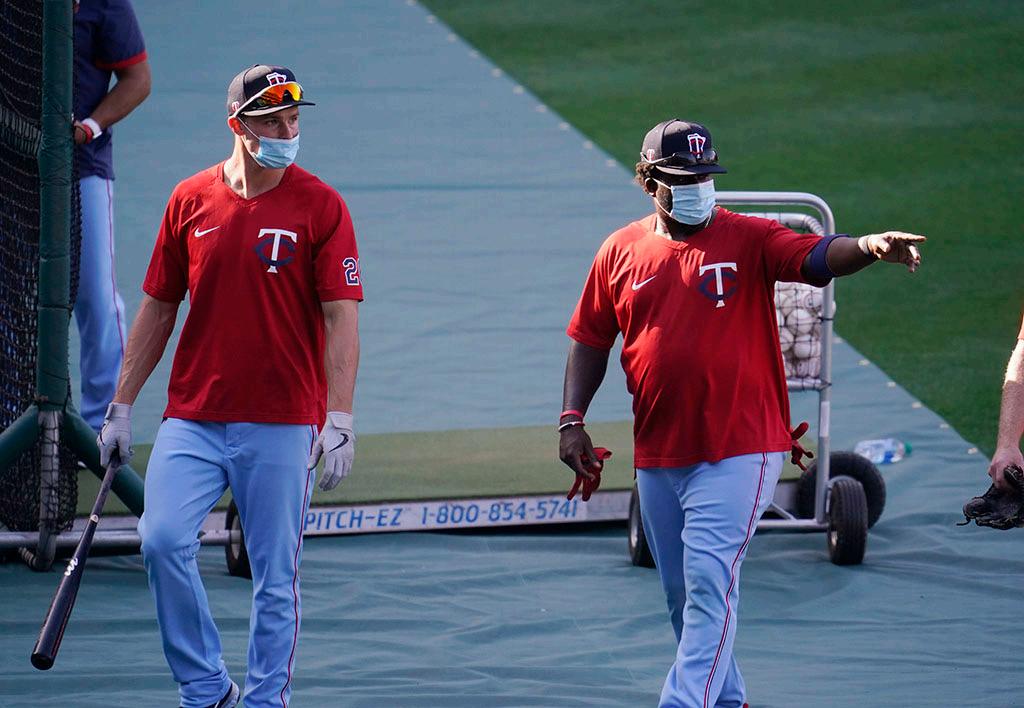
photo by Marcio Jose Sanchez Members of the Minnesota Twins walk on the field with their masks up during batting practice before a game against the Los Angeles Angels. MLB requires masks for all team members and staff that are not participating in the game in effort to combat the spread of COVID-19. 2021 has seen a small number of games postponed compared to 2020, suggesting that their protocols are effective. 30 THE EYRIE
MLB and COVID, BY THE NUMBERS 43
That’s the number of games that MLB was forced to postpone, including 14 of the Cardinals’ and 12 of the Marlins’.
24
That’s how many players opted out of the season, including three that opted out during the year and two that opted back in.
54
That’s how many games were played in MLB’s expanded postseason due to the four-round postseason format instated.
53.3
That’s the percentage of MLB teams that qualified for postseason play, the first time that more than half of MLB’s teams qualified.
SPORTS
Chiefs need to address O-line, secondary
By: Mark Elliott
The Kansas City Chiefs have been dominant in the AFC West for the past 7 seasons, the past 3 years since the Mahomes era started. Emerging the Chiefs as true contenders. In 2018 the Chiefs made a great playoff run, ending the Arrowhead playoff curse. But ultimately fell short in the AFC Championship against Tom Brady’s New England Patriots. In 2019, they returned the Lamar Hunt Trophy back to Kansas Cityfor the first time since 1970. In the Super Bowl LIV, they came back to beat the San Francisco 49ers. This last season they made it back to the Super Bowl, but got blown out by the Buccaneers, Mahomes’ first ever loss where the margin of victory was larger than one possession. Now there are some questions to be asked in the Chiefs’ Kingdom. Due to injuries on the offensive line and releasing Mitchell Schwartz and Eric Fischer, due to injuries the Chiefs deemed them out of their prime, and with these injuries decided it was time to release them. Their release comes with uncertainty about other offensive linemen, Laurent Duvernay-Tardif, who opted out of last season due to COVID. His intentions are still unclear regarding possibly playing in the upcoming 2021-2022 season. There was also great concern with the Chiefs corner and other secondary problems this season. Tryann Mathieu had a great season, being the leader of the Chiefs defense, although the rest of the pass coverage struggled, unable to make big in-game adjustments. This could also be partially put on Defensive Coordinator, Steve Spagnola. As for the pass rush, Chris Jones played pretty well on the front lines, but he was frequently double teamed on the interior. Other pass rushers such as Frank Clark didn’t produce numbers until postseason time. No big free agency moves have been made to improve the defense thus far as the Chiefs likely look toward the draft for defensive talent The Chief’s General Manager, Brett Veach, has already been moving in on solving some of these problems, signing offensive linemen Joe Thuney to a 5-year $80 million deal. And offensive linemen Kyle Long for a one year deal. These players have been good and debatably Joe Thuney has been just as good if not better than Mitchell Scwartz and Eric Fischer. These signings will not fully repair the damaged line but will heavily help the situation. It was also very upsetting for Chiefs fans to see their offense seemingly halted against the Buccaneers in the Super Bowl this last season. The Bucs were ready for anything the Chiefs offense tried to do, the only one able to make plays was Mahomes. Personnel has come into question with the Chiefs, as they may lose offensive coordinator Eric Bienemy. Bienemy has proved to be a great offensive minded coach, and the thought of losing him to a coaching position elsewhere makes people uncertain about the Chiefs offensive future. There is also a lot to be said about Andy Reid, as his coaching approach to the Buccaneers in Super Bowl LV was subpar at best. He came with the same game plan as he did against the Bucs earlier in the season. He continued to design plays for Tyreek Hill as he put up 4 touchdowns on the Bucs at their previous matchup. Hill had at least two defenders at a time on him all night, and Reid seemingly wouldn’t adapt to the situation. It was especially hard for Mahomes as there was immediate pass rush on him at all times. This is where Reid could have adapted and used quick hitters to Travis Kelce or Mecole Hardman. Reid is obviously not at fault for the loss but played a large role. Despite all of these problems and questions the Chiefs have always found a way to problem solve over the past 3 years. I think the Chiefs will prevail nevertheless of their setback, as long as number 15 is leading the team, the Chiefs have a chance. Not to be mistaken, this year will be the test, if they win it all this year, it becomes a dynasty, but if they flop and don’t perform, the Red Kingdom’s reign will come to an end.
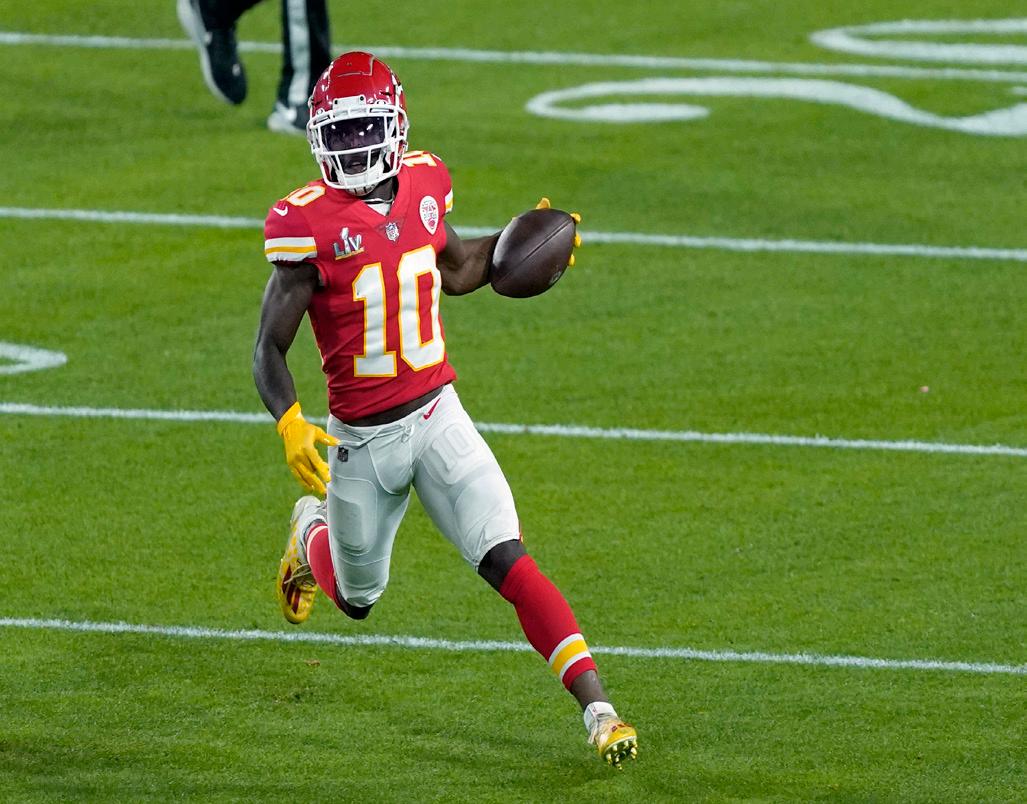
Photo by: Jason Behnken Wide receiver Tyreek Hill, getting one of his few receptions in Super Bowl LV. Hill was frequently doubled.
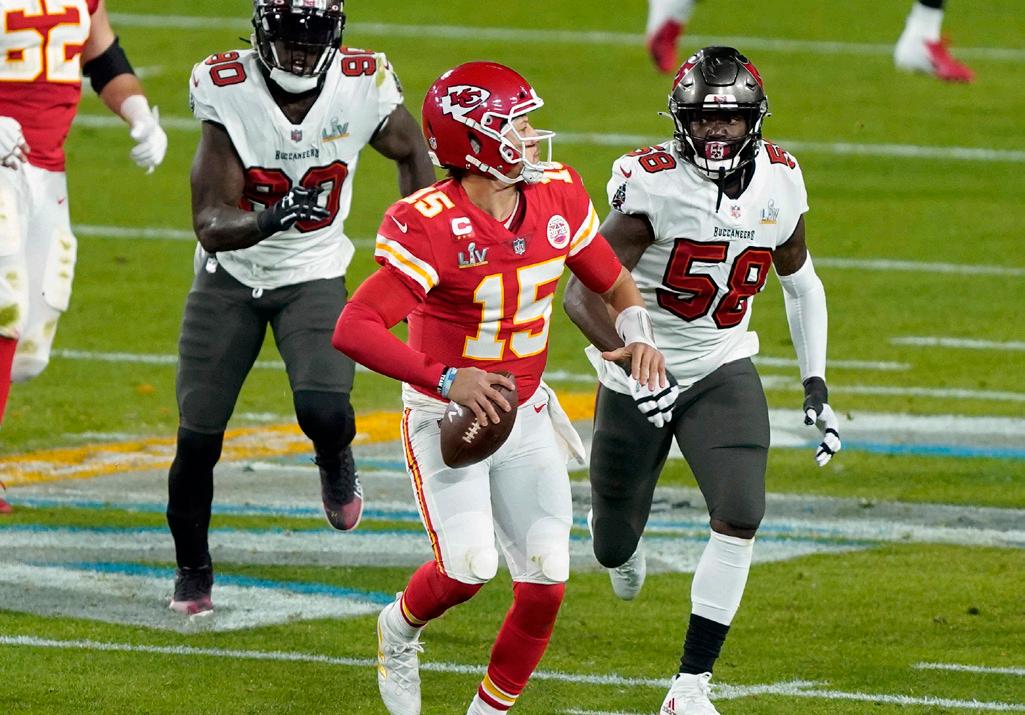
Photo by: Jason Behnken Mahomes evading the Buccaneers pash rush in Super Bowl LV. He was consistently blitzed all night long.







